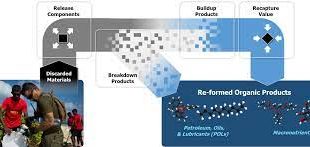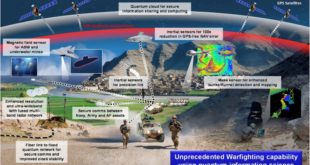In its simplest form a supply chain is the activities required by the organisation to deliver goods or services to the consumer. A supply chain can take on the form of a product based supply chain or that of a service, where services come together to offer an overall customer …
Read More »Monthly Archives: June 2022
DARPA ReSource converting military waste into useful products
Over the past decades, global plastic production and consumption have witnessed a meteoric rise. Plastic is durable, easy to produce, lightweight, unbreakable, odourless, and chemically resistant. Its low manufacturing cost and durability are the two main factors responsible for the industry’s rapid growth. A so-called wonder product of the twentieth …
Read More »DARPA Quantum Apertures (QA) developing employing Rydberg atoms for military electronic warfare, radar, and communications.
The world, say many experts, is on the verge of a second quantum revolution. Many scientists believe that quantum will enjoy its first real commercial success in sensing. That’s because sensing can take advantage of the very characteristic that makes building a quantum computer so difficult: the extraordinary sensitivity of …
Read More »Electronic Components Market
An electronic components is a physical entity in an electronic device that is used to affect the electronic field. Electronic components are categorized into two types i.e. active components and passive components. Active electronic components are used to produce energy in the form of voltage, whereas passive electronic components are used …
Read More »Artificial Intelligence for Early Warning Intelligence and effective response for CBRN threats
The threats of chemical, biological, radiological, nuclear and explosive (CBRNE) hazards continue to advance. CBRN weapons are some of the most indiscriminate and deadly weapons in existence today, with capability to affect large population in wide geographical area and in short time. The release of Chemical, Biological, Radiological and Nuclear …
Read More »Neural and tensor holography enables realistic 3D holographic images in virtual and augmented reality headsets
Virtual reality headsets have gained tremendous popularity. However, one common problem tends to occur— the headsets can make users feel sick. Nausea can be experienced because users’ eyes are being tricked into seeing a 3D scene, when, in fact, they are staring at a 2D fixed-distance display. One possible solution …
Read More »Perovskite solar cells manufacturing methods enable cheap and ultra high efficiency solar panels powering tablets to buildings’ electrical grids
Increasing energy demand, environmental issues, and limited availability of fossil fuels are demanding research on sustainable and renewable energy resources. The sun is the ultimate source to accomplish clean energy demand and photovoltaics, also known as solar PV, have been growing exponentially to harness it. The global solar photovoltaics (PV) …
Read More » International Defense Security & Technology Your trusted Source for News, Research and Analysis
International Defense Security & Technology Your trusted Source for News, Research and Analysis






